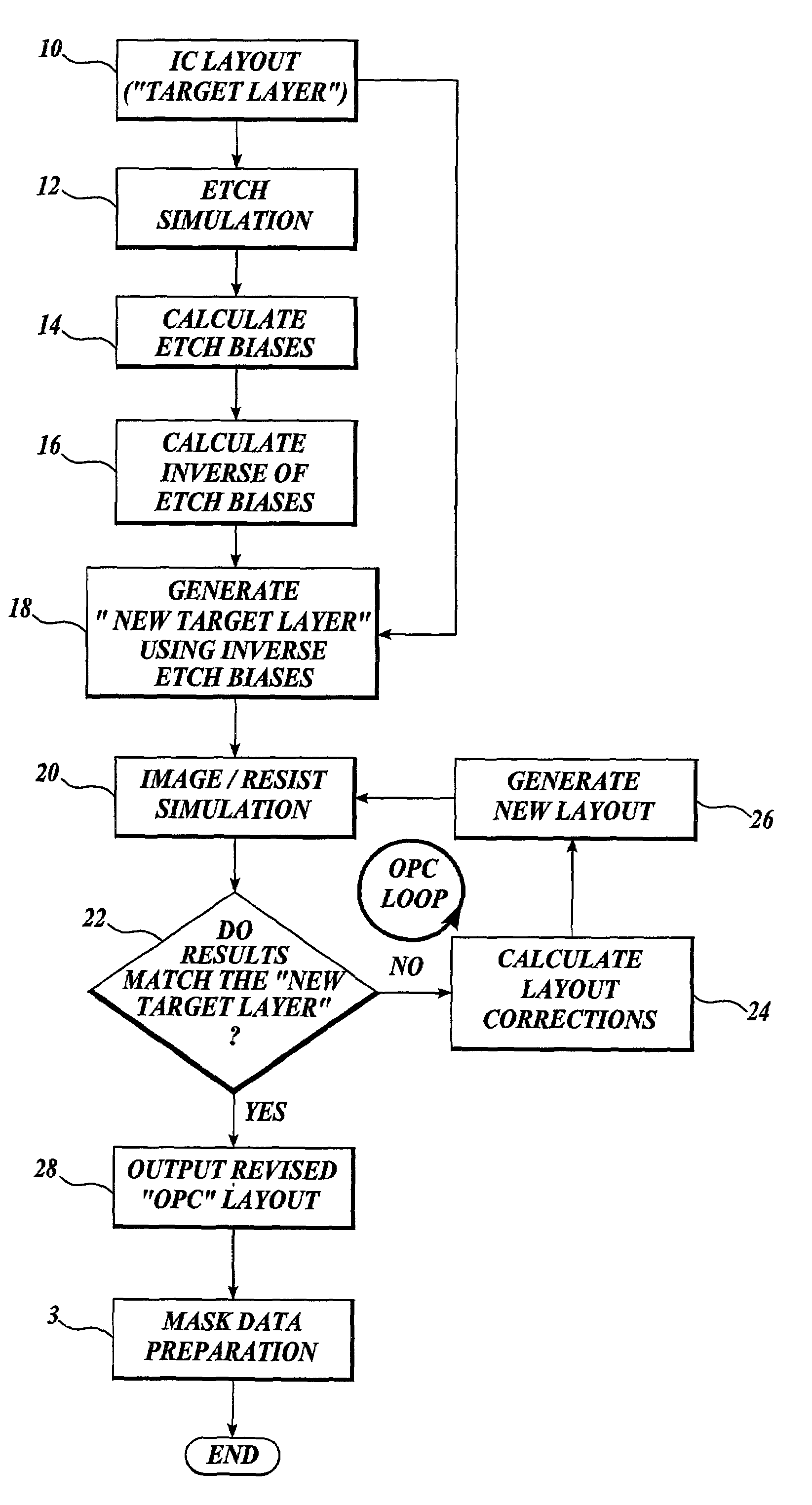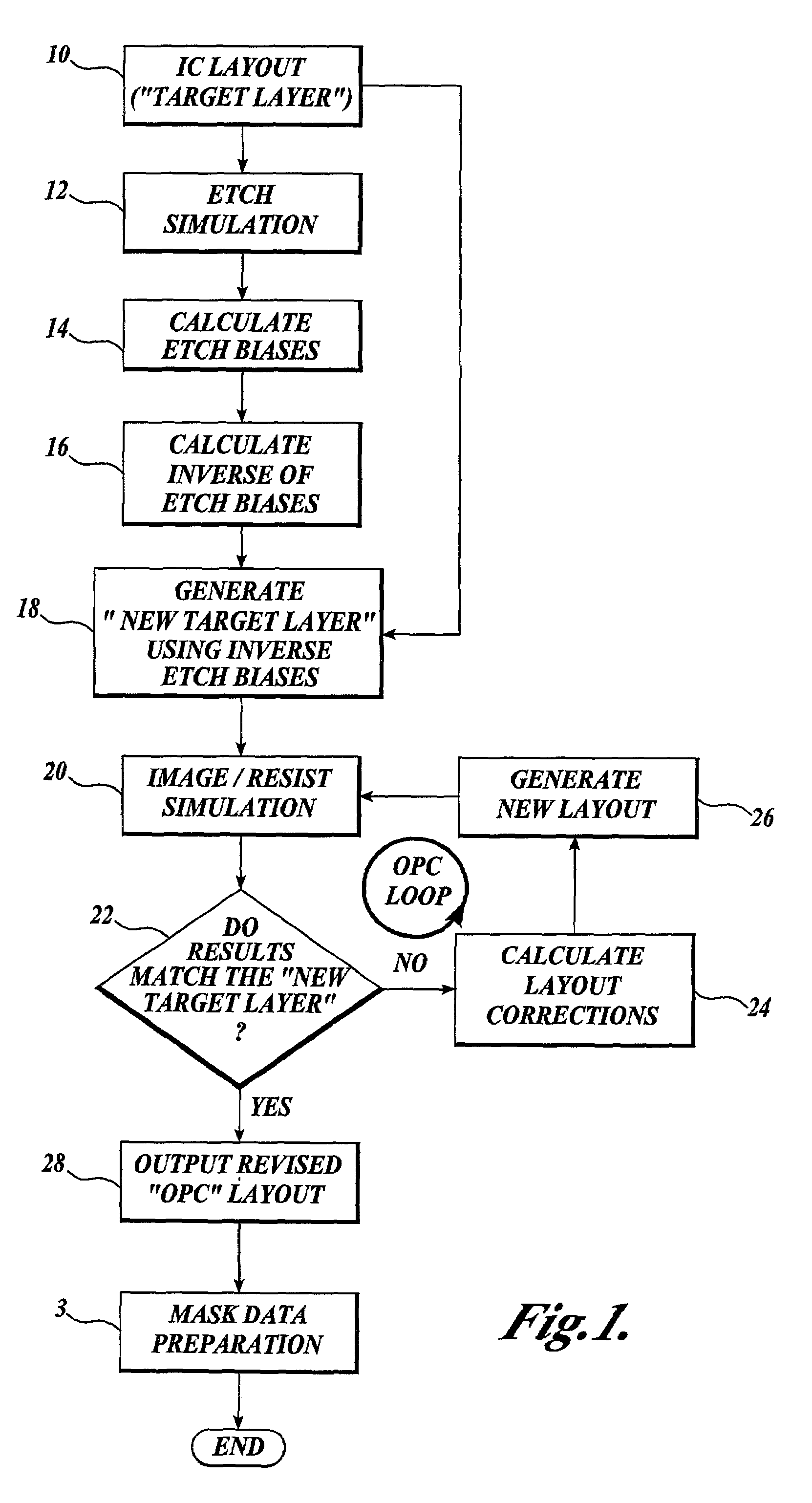Method of compensating for etch effects in photolithographic processing
a technology of photolithographic processing and mask/reticle data, applied in the field of photolithographic processing, can solve the problems of processing distortion that affects a wafer, etch effect, more complex and severe distortion,
- Summary
- Abstract
- Description
- Claims
- Application Information
AI Technical Summary
Benefits of technology
Problems solved by technology
Method used
Image
Examples
Embodiment Construction
[0013]As indicated above, the present invention is a method for compensating mask / reticle data for process distortions that occur on a wafer during photolithographic processing and particularly during etch processing.
[0014]In accordance with one embodiment of the present invention, and as shown in FIG. 1, a computer system of the type including one or more processors (not shown), executes a sequence of program steps stored on a computer-readable media to cause the computer to read an IC layout or data file at a step 10 that defines a number of features to be placed on a mask / reticle. These features will define corresponding objects on a wafer when the wafer is exposed using the mask / reticle. The mask / reticle data can be referred to as a “target layer” when it defines the desired size / shape of the objects to be created on the wafer after processing. At a step 12, an etch simulation is performed that determines the likely effects of how the size or shape of the objects created on the ...
PUM
| Property | Measurement | Unit |
|---|---|---|
| distance | aaaaa | aaaaa |
| diameters | aaaaa | aaaaa |
| diameter | aaaaa | aaaaa |
Abstract
Description
Claims
Application Information
 Login to View More
Login to View More - R&D
- Intellectual Property
- Life Sciences
- Materials
- Tech Scout
- Unparalleled Data Quality
- Higher Quality Content
- 60% Fewer Hallucinations
Browse by: Latest US Patents, China's latest patents, Technical Efficacy Thesaurus, Application Domain, Technology Topic, Popular Technical Reports.
© 2025 PatSnap. All rights reserved.Legal|Privacy policy|Modern Slavery Act Transparency Statement|Sitemap|About US| Contact US: help@patsnap.com



